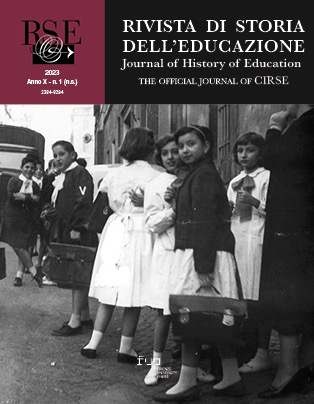Vol 10, No 1 (2023): Sixty years after the reform of middle school: a new historiographical overview
Issue Description
On December 31,1962, the law n. 1859 was approved. It established the unified middle school, starting from the class of 1963-64. The Law, making secondary education compulsory, free and equal for all citizens, achieved a substantial application of Article 34 of the Constitution. The most important school reform of democratic Italy took place after years of discussion and unsuccessful attempts, despite this it was destined to impact with its effects, with its achievements and its shortcomings, the development of the education system in the following decades.
In 2013, on the occasion of the 50th anniversary of its establishment, the then «Nuovo bollettino CIRSE», offered a first picture of a scenario in full development of institutional, historical-scholastic, historical-pedagogical and historical-cultural studies on the subject. The current call for papers is in continuity with that study and wants to take into account, at the same time, how much approaches and methodologies have been enriched since then, offering new perspectives open to international and interdisciplinary suggestions that, especially in recent years, have contributed to the advancement of the history of education.

